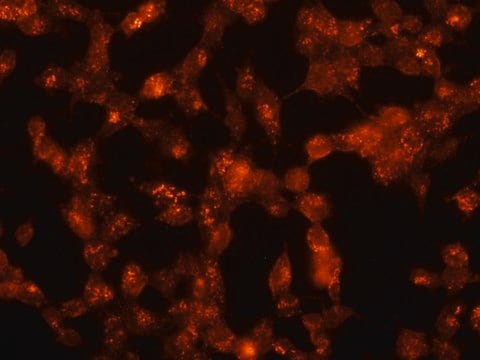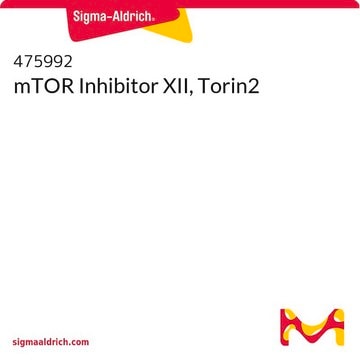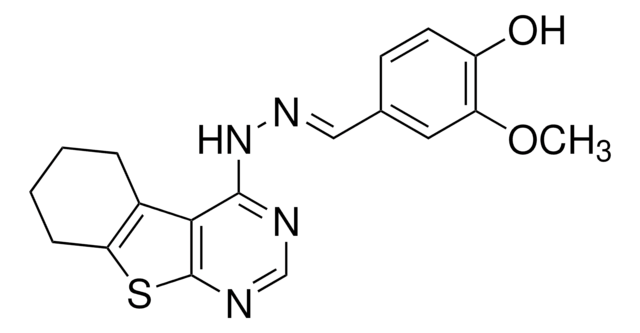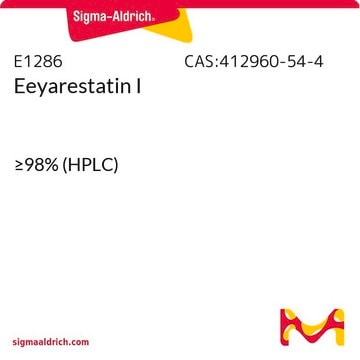G0923
Golgicide A
≥98% (HPLC)
Synonym(s):
6,8-Difluoro-4-pyridin-3-yl-3a,4,5,9b-tetrahydro-3H-cyclopenta[c]quinoline, CID 25113626, GCA
About This Item
Recommended Products
Assay
≥98% (HPLC)
form
solid
solubility
DMSO: >10 mg/mL
storage temp.
room temp
SMILES string
Fc1cc(F)c2NC([C@@H]3CC=C[C@@H]3c2c1)c4cccnc4
InChI
1S/C17H14F2N2/c18-11-7-14-12-4-1-5-13(12)16(10-3-2-6-20-9-10)21-17(14)15(19)8-11/h1-4,6-9,12-13,16,21H,5H2/t12-,13+,16?/m0/s1
InChI key
NJZHEQOUHLZCOX-FTLRAWMYSA-N
Application
Biochem/physiol Actions
Features and Benefits
Signal Word
Warning
Hazard Statements
Precautionary Statements
Hazard Classifications
Eye Irrit. 2
Storage Class Code
11 - Combustible Solids
WGK
WGK 3
Flash Point(F)
Not applicable
Flash Point(C)
Not applicable
Regulatory Listings
Regulatory Listings are mainly provided for chemical products. Only limited information can be provided here for non-chemical products. No entry means none of the components are listed. It is the user’s obligation to ensure the safe and legal use of the product.
JAN Code
G0923-5MG:
G0923-BULK:
G0923-25MG:
G0923-VAR:
Certificates of Analysis (COA)
Search for Certificates of Analysis (COA) by entering the products Lot/Batch Number. Lot and Batch Numbers can be found on a product’s label following the words ‘Lot’ or ‘Batch’.
Already Own This Product?
Find documentation for the products that you have recently purchased in the Document Library.
Customers Also Viewed
Articles
Cyclic nucleotides like cAMP modulate cell function via PKA activation and ion channels.
Our team of scientists has experience in all areas of research including Life Science, Material Science, Chemical Synthesis, Chromatography, Analytical and many others.
Contact Technical Service
















